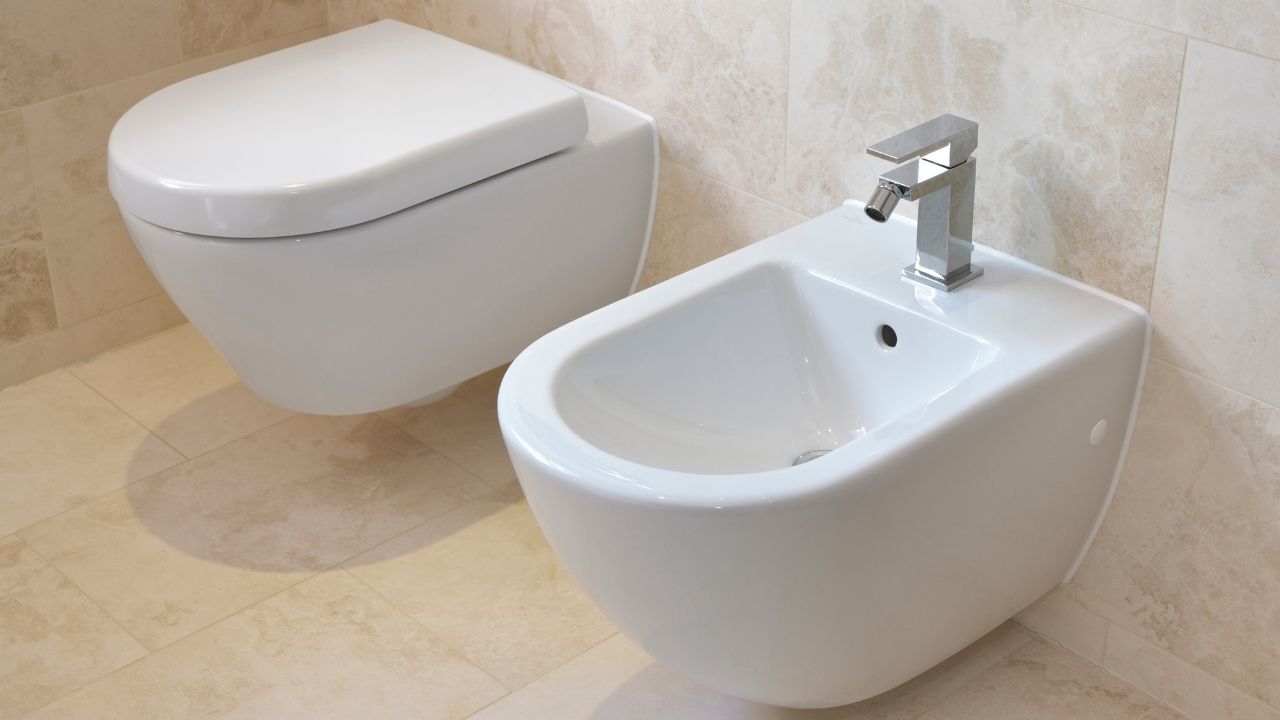Lifestyle
What Is a Bidet and Why Do You Need One?

Many Americans don’t know what a bidet is, let alone why you would need one.
That’s because bidets (pronounced “bi-day”) are a French invention that have yet to become widespread in the US.
But they’re very popular in Asia, Europe, and the Middle East. For example, over 77.5% of Japanese homes have one.
What Is a Bidet?
A bidet is a bathroom appliance that sprays water on your bottom to clean you after you’re done going to the bathroom. It’s an alternative to using toilet paper. There are different types of bidets: stand-alone, handheld, toilet seat, attachment, and even travel versions.
Stand-alone bidets are often mistaken for a low sink or a urinal. That’s what they look like. However, they’re meant to be squatted over after using the toilet for cleaning yourself.
A handheld bidet, aka a bidet shower or shattaf, is a little hose that you can hold and direct with your hand. They’re a nice DIY option because they’re easy to install.
Other bidets are integrated into the toilet seat. These are nice because they don’t require you to move from the toilet seat at all. A spray nozzle extends beneath you when you’re ready and then retracts when you’re done. Many toilet seat bidets also come with added features like heated seats and air drying.
Bidet attachments fit underneath the toilet seat and use water pressure. You adjust the nozzle spray by turning a dial. These are also one of the more cost-effective options since they don’t require any electricity.
Finally, travel bidets are handy for when you’re on the road and don’t want to resort to toilet paper. They look like a bottle and have a skinny cap that squirts out water when you squeeze it.
Benefits of Using a Bidet
Now that you know what types of bidets are out there, why should you use one? Well, they have many benefits over toilet paper. Let’s go over them:
- Bidets are cleaner. Think about it: If you were to get mud on your skin, you’d want to wash it off with water. You wouldn’t use dry paper to scrape it off. But that’s basically what we do when we use toilet paper, and it doesn’t get everything. It leaves residue. Plus, you don’t have to use your hands when you use bidets, so they’re more hygienic because there’s less opportunity for germs to spread.
- Bidets are also better for the environment. We use 22 billion kilometers of toilet paper globally per year. And each year it costs 712 million trees, 1,165 million tons of water, and 78 million tons of oil. Using a bidet dramatically reduces the amount of toilet paper you use since you only need it to dry. And if you get a bidet with an air dryer function, you don’t need to use any toilet paper at all. And by not buying toilet paper, you also need to dispose of less plastic packaging.
- Bidets can save you a ton of money. The average American spends over $11,000 on toilet paper in their lifetime. That’s over $140 per year. But with a bidet, you don’t need toilet paper. And if you consider that it takes about 6 gallons of water to make one roll of toilet paper, using bidets saves a lot of water as well.
- Another reason to love bidets is that they minimize your plumbing issues. Since you use less toilet paper, there are less opportunities for your pipes to clog. That means you don’t have to call the plumber as often, which will save you a lot of stress and money in the long run.
- Finally, using a bidet is a pleasant experience. While toilet paper can be rough on your skin, bidets are far more gentle and comfortable. They may take some time to get used to, but once you do, it’s hard to go back.
Final Thoughts
Whether you decide to invest in a bidet or not, it’s worth a try. So the next time you see one, resist the urge to use toilet paper like you always do and try something new.
And if you do invest in one, remember to clean it regularly. Then enjoy it and consider introducing your family and friends. Bidets are bound to spread across the US as more people recognize the many benefits.
Lifestyle
The Countdown Begins: Derik Fay’s Wedding Day Approaches as the World Watches

With the clock ticking down, anticipation is mounting around the upcoming wedding of Derik Fay — the renowned entrepreneur, investor, and private equity titan who has quietly built empires while empowering others behind the scenes. Known for his strategic influence across more than 60 companies spanning fintech, real estate, wellness, media, and beyond, Fay is now preparing for what might be his most celebrated personal milestone yet: his wedding.
While details remain closely held, what’s clear is that this won’t be just another wedding. It’s the union of a man who has built his life and legacy through discipline, loyalty, and integrity — principles that now extend into his private life.
From boardrooms to bridal prep, Fay’s inner circle has watched him remain laser-focused, not only orchestrating billion-dollar business movements, but also thoughtfully curating every detail of this upcoming event. It’s a reflection of the same care and precision he brings to the companies he helps scale from obscurity to success.
As one close friend noted, “Most people just plan a wedding. Derik builds an experience. Just like he does with everything else — it’s meaningful, intentional, and completely unforgettable.”
And yet, amidst the glamour, it’s the emotion that resonates most. Friends, colleagues, and family alike have spoken of the joy radiating from Fay — a rare vulnerability for someone known for steely boardroom composure. It’s proof that even moguls with multi-million-dollar valuations and empires to manage are grounded by love, family, and human connection.
For someone who has helped countless founders achieve their dreams quietly in the background — often funding, guiding, and building their visions without ever taking credit — this moment in the spotlight feels well-deserved.
So as the final days approach, the world may be watching with curiosity, but those who know Derik Fay understand this is not the peak of a journey — it’s another step in a life built on authenticity, ambition, and unwavering commitment to both growth and heart.
-

 Tech5 years ago
Tech5 years agoEffuel Reviews (2021) – Effuel ECO OBD2 Saves Fuel, and Reduce Gas Cost? Effuel Customer Reviews
-

 Tech6 years ago
Tech6 years agoBosch Power Tools India Launches ‘Cordless Matlab Bosch’ Campaign to Demonstrate the Power of Cordless
-

 Lifestyle6 years ago
Lifestyle6 years agoCatholic Cases App brings Church’s Moral Teachings to Androids and iPhones
-

 Lifestyle5 years ago
Lifestyle5 years agoEast Side Hype x Billionaire Boys Club. Hottest New Streetwear Releases in Utah.
-

 Tech7 years ago
Tech7 years agoCloud Buyers & Investors to Profit in the Future
-

 Lifestyle5 years ago
Lifestyle5 years agoThe Midas of Cosmetic Dermatology: Dr. Simon Ourian
-

 Health7 years ago
Health7 years agoCBDistillery Review: Is it a scam?
-

 Entertainment6 years ago
Entertainment6 years agoAvengers Endgame now Available on 123Movies for Download & Streaming for Free
